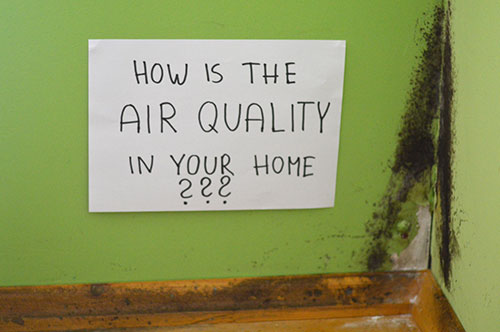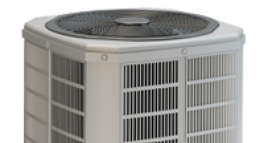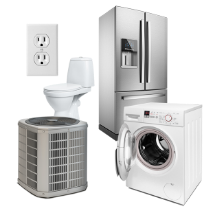Air quality is not just a concern for denizens of cities and large metropolitan areas; the quality of the air inside your home matters, too. Here’s a quick primer on indoor air quality and factors that can affect it, including mold, VOCs (volatile organic compounds), radon and carbon monoxide.
Indoor Air Quality
Indoor Air Quality, according to the U.S. Environmental Protection Agency, refers “to the air quality within and around buildings and structures, especially as it relates to the health and comfort of building occupants. Understanding and controlling common pollutants indoors can help reduce your risk of indoor health concerns.”
Poor indoor air quality can result in adverse health effects that can appear immediately or years later.
Immediate effects, according to the EPA, are similar to those from colds or other viral diseases, so it can be difficult to pinpoint if symptoms are a result of exposure to indoor air pollution. The EPA advises paying close attention to when and where symptoms occur, and if they lessen or disappear when you are away from a certain area of your home, steps should be taken to identify indoor air sources that could be causing your symptoms.
Long-term health effects include respiratory diseases, heart disease and cancer, so the EPA advises trying to identify any problems with the indoor air quality and taking steps to improve it, even if health symptoms are not present.
Radon
Radon is a naturally occurring radioactive gas that can cause lung cancer that can’t be seen or smelled. Radon is the No. 1 cause of lung cancer among non-smokers, according to EPA estimates, and the second leading cause of lung cancer. Radon is responsible for about 21,000 lung cancer deaths every year, according to the EPA.
Radon test kits can be purchased online or at home improvement stores, and the National Radon Program Services at Kansas State University offers discounted test kits available to purchase online. State-level radon programs also can provide information on professional testing services. Find your state-level program, as well more information about radon zones across the country here.
Mold
Potential health effects and symptoms associated with mold exposures include allergic reactions, asthma and other respiratory complaints, according to the EPA.
Mold is not typically an issue indoors unless mold spores land on a wet or damp spot and begin growing, but molds can be found almost anywhere and can grow on virtually any substance — wood, paper, carpet and foods — if moisture is present.
Preventing and controlling indoor mold growth can be accomplished by controlling moisture indoors. The first step to doing so is by fixing water leaks or other water problems. Other tips from the EPA to prevent mold growth include:
- Keep indoor humidity between 30 to 60 percent.
- Venting bathrooms, dryers and other moisture-generating sources to the outside. If mold in the shower or elsewhere in the bathroom seems to reappear, increasing ventilation (running a fan or opening a window) and cleaning more frequently will usually prevent mold from recurring, or at least keep the mold to a minimum.
- Using air conditioners and dehumidifiers.
- Increasing ventilation.
- Using exhaust fans whenever cooking, dishwashing and cleaning.
- Cleaning and drying any damp or wet building materials and furnishings within 24 to 48 hours to prevent mold growth.
- Cleaning mold off hard surfaces with water and detergent, and drying completely. Absorbent materials, such as ceiling tiles and carpet that are moldy, might need to be replaced. Mold can grow on or fill in the empty spaces and crevices of porous materials, so the mold may be difficult or impossible to remove completely.
- Reducing the potential for condensation on cold surfaces (i.e., windows, piping, exterior walls, roof or floors) by adding insulation.
- Avoiding carpeting in areas where there is a perpetual moisture problem.
VOCs
Volatile organic compounds (VOCs) are emitted as gases from certain solids or liquids. Sources of VOCs include:
- Paint, paint strippers and solvents.
- Wood preservatives.
- Aerosol sprays.
- Cleansers and disinfectants.
- Moth repellents and air fresheners.
- Stored fuels and automotive products.
- Hobby supplies, such as glues and adhesives, permanent markers and photographic solutions.
- Dry-cleaned clothing.
- Building materials and furnishings.
- Office equipment, such as copiers and printers, correction fluids and carbonless copy paper.
Immediate and long-term health effects from exposure to VOCs can include eye, nose and throat irritation; headaches, loss of coordination and nausea; damage to liver, kidney and central nervous system; and potentially cancer.
The extent and nature of the health effect will depend on factors such as level of exposure and length of time exposed. To reduce your exposure, make sure to increase ventilation (open a window, turn on fan) when using VOC-emitting products; follow all label directions and precautions; don’t store opened containers of paint or similar materials indoors, and safely dispose of unused products.
Key VOCs the EPA advises avoiding include:
- Methylene chloride, which is a common ingredient in paint strippers, adhesive removers and aerosol spray paints. Methylene chloride is known to cause cancer in animals.
- Benzene, which is a known human carcinogen, and can be found in tobacco smoke, stored fuels, paint supplies and automobile emissions in attached garages.
- Perchloroethylene — the chemical most commonly used in dry cleaning — which has been shown to cause cancer in animals. If dry-cleaned goods have a strong chemical odor when you pick them up, do not accept them until they have been properly dried, the EPA advises, adding that if goods with a chemical odor are returned to you on subsequent visits, try a different dry cleaner.
Carbon Monoxide
Carbon monoxide, CO, is an odorless, colorless gas to which exposure at high concentrations can be fatal. Exposure to CO causes carboxyhemoglobin in the blood, which inhibits oxygen intake.
Health effects at low concentrations include fatigue in healthy people and chest pain for those with heart disease. At moderate concentrations, exposure can lead to angina, impaired vision and reduced brain function.
Exposure to higher concentrations of CO can cause impaired vision and coordination, headaches, dizziness, confusion, nausea and flu-like symptoms that clear up after leaving home. At very high concentrations, exposure can be fatal.
Each year, more than 400 Americans die from unintentional CO poisoning not linked to fires, more than 20,000 visit the emergency room, and more than 4,000 are hospitalized, according to the Centers for Disease Control.
To reduce your risk of exposure:
- Make sure all combustion equipment is properly maintained and adjusted.
- Use proper fuel in kerosene space heaters.
- Install and use an exhaust fan vented to outdoors over gas stoves.
- Open flues when fireplaces are in use.
- Choose properly sized wood stoves that are certified to meet EPA emission standards.
- Have an annual professional inspection of central heating system (furnaces, flues and chimneys), and make sure they are clean and tuned up and that any leaks are fixed quickly.
- Don’t idle your vehicle in a closed garage.
- Do not use portable flameless chemical heaters, charcoal stoves, portable gas camp stoves or generators indoors.
- Have your chimney checked or cleaned every year.

Protect Your Budget With 2-10
Improving your indoor air quality is a great way to protect yourself. A great way to protect your budget is with a Home Service Plan from 2-10 Home Buyers Warranty (2-10). Purchase your protection today!









